🔖 16 min read
Japan is filled with public spaces, from lush greens to brick-and-mortar wonders, many of which were developed for visitors to enjoy for free. Exploring the country doesn’t have to be expensive, as you’ll never run out of things to do at no cost.
Japan’s cities are largely walkable and filled with photo opportunities, from the incredible neonscapes of Osaka to the quaint shops of Shimokitazawa and snowy Sapporo in the wintertime. Getting up and exploring the country will always turn out to be a wonderful adventure where you can stumble upon temples and shrines outside of the typical tourist route and discover facets of the local culture hidden from plain sight. Public parks like the Tsurumi Ryokuchi Park and Odaiba Seaside Park, and natural reserves like the Arashiyama Bamboo Forest and Lake Okutama, are also easily accessible and can be visited and enjoyed for free.
Regardless of the time of year, there’s always a free festival happening somewhere in the country, and joining walking tours will allow you to socialise with locals while immersing in the cultural nuances of each city. While building your free-to-enjoy itinerary for your next trip, here are some amazing options to consider.
Top 15 Free Things to Do in Japan
Tokyo Dome City

Image Credit: JNTO
Tokyo Dome City is a massive complex that offers a plethora of facilities, from an amusement park to museums, sports centres, shopping, dining, and spaces dedicated to relaxation. It’s famously home to the Tokyo Dome Baseball Stadium, which acts as the home turf for the Yomiuri Giants, and is also used for various entertainment events. It’s a wonderful place to visit for days when you don’t have a particular itinerary, as there are plenty of things to do for children and adults alike.
Free Things to Do in Tokyo Dome City
Tokyo Dome City is open to all visitors with no entrance fee. You can walk around the amusement park and garden, take photos, and enjoy the lively atmosphere. The outdoor attractions and stunning views of the night lights and amusement park rides offer a picturesque stroll, but do note that some facilities may not allow entry without payment. The area is also home to a variety of restaurants and cafes to wind down after a long day.
Paid Activities in Tokyo Dome City
Tokyo Dome City is home to a plethora of facilities. Paid activities in the area include:
Admission to ASOBono! (indoor playground for children)
Amusement park rides
Space Travelium TeNQ (space museum)
Activities in the Spo-Dori! Indoor Sports Facility and bowling center
AniTouch indoor petting zoo
Spa treatments at LaQua
Tickets for the theater, martial arts hall, and baseball stadium whenever events are ongoing
Horse race betting
Access
Shirakawa-Go & Gokayama
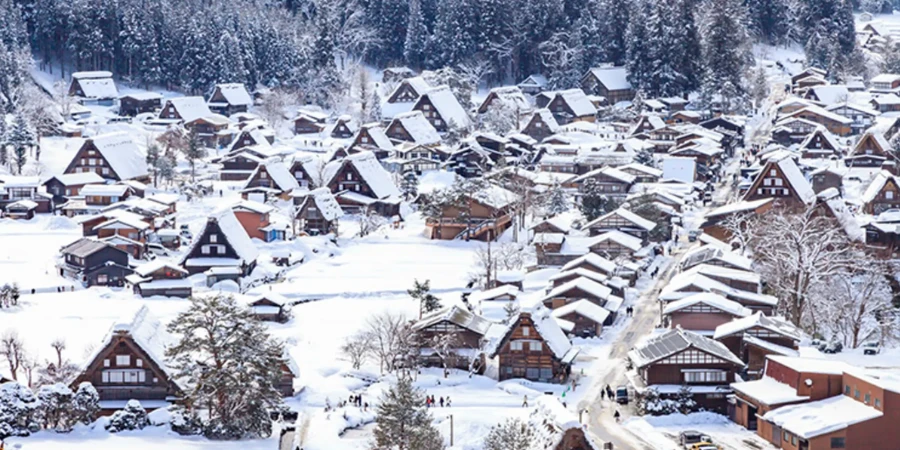
Image Credit: JNTO
In Gifu Prefecture, you’ll find two UNESCO World Heritage Sites called Shirakawa-Go and Gokayama. These alpine villages are infamous for their cluster of gassho-zukuri, conic-shaped farmhouses that are reminiscent of Hobbit houses, architecturally structured to withstand heavy snow. While these places are often visited during the wintertime for the magical snow-capped scenery, they offer a scenic experience year-round. Most visitors opt for a trip to Shirakawa-Go, but Gokayama is only 30 minutes to an hour by bus, which is perfect for a morning-to-night day trip!
Free Things to Do in Shirakawa-Go
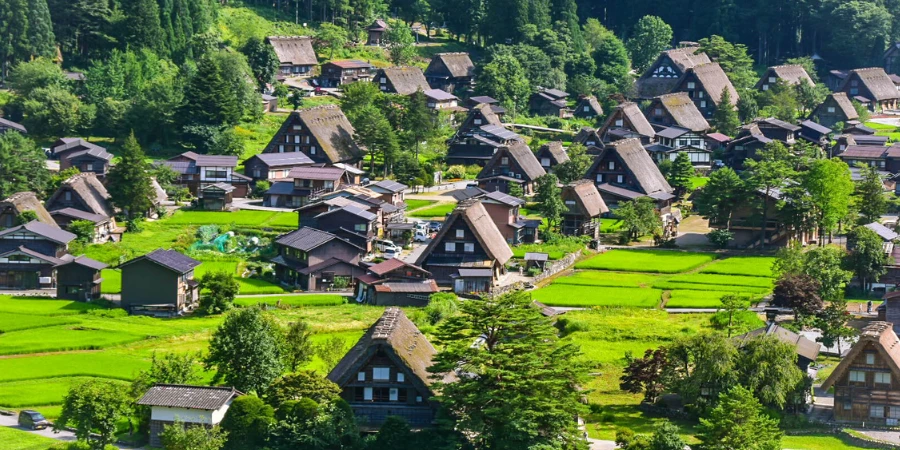
Image Credit: Snow Monkey Resorts
You can roam around the architecturally stunning village of Shirakawa-Go at no cost. The bustling main street called Shirakawa Kaido is also a great place to stop by for a quick bite or for browsing the array of local stalls and delicacies.
While in the area, you can head to the nearby Ogimachi Castle Observation Deck, which offers panoramic views of Ogimachi Village, where the gassho-zukuri are clustered. It’s a great spot to visit for taking panoramic photos of the incredible landscape. In Ogimachi Village, you’ll also find the free Shirakawa Hachiman Shrine.
Paid Activities in Shirakawa-Go
While exploring Shirakawa-Go is free, you can opt to pay for immersive experiences, such as entering designated gassho-zukuri or staying in one overnight. An outdoor museum called Gassho-zukuri Minka-en exhibits a collection of preserved farmhouses amid stunning landscapes. You can also book guided tours and craft workshops (such as paper-making) for a fee.
Free Things to Do in Gokayama
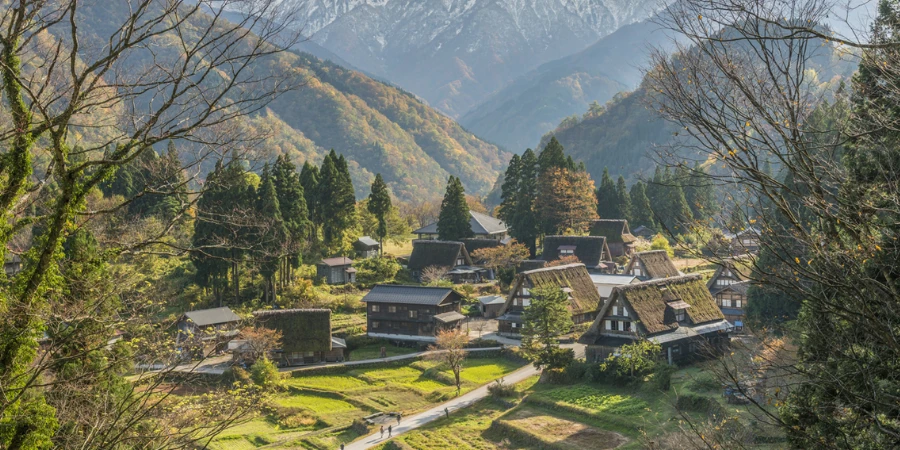

Image Credit: Visit Gifu
In Gokayama, visitors like to stop by the Ainokura and Suganuma villages, which are home to gassho-zukuri surrounded by quiet fields. The small shrines that dot the villages are free to enter. In more bustling streets, you’ll find small shops that sell souvenirs, crafts, and local delicacies. Gokayama is also home to historical buildings, such as the Iwase Family Residence and the Murakami Family Residence, which can be admired from the outside (admission is possible with an entrance fee).
Paid Activities to Do in Gokayama
Like Shirakawa-Go, you can also enter gassho-zukuri for a small fee in Gokayama, or stay in a more developed version of the farmhouse overnight. The Gokayama Washi-no-Sato is a papercraft museum where you can watch the centuries-old paper-making process and join various workshops.
Access
Tokyo Metropolitan Government Building & Observation Deck
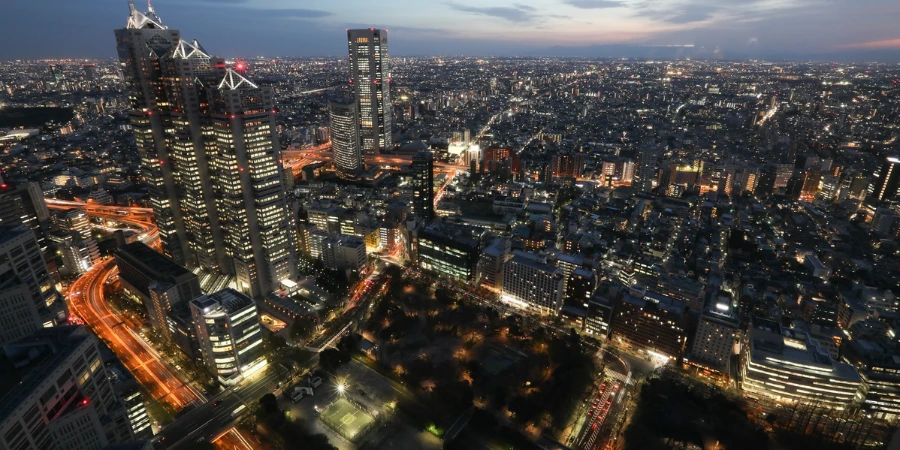

Image Credit: TimeOut
While Tokyo is brimming with observation decks, most charge a fee of 1,000 to 3,000 yen per person. The Tokyo Metropolitan Government Building & Observation Deck is a wonderful option for budget travellers, as it’s completely free to enter and offers stunning views of the cityscape. Located in busy Shinjuku, the twin-tower building houses two observation decks (one in each tower) where you can spot famous landmarks, including Mount Fuji, Tokyo Skytree, Tokyo Tower, Meiji Shrine, Tokyo Dome, and more. Due to the popularity of this attraction, be prepared to wait in long lines during busy tourist seasons, local holidays, and weekends.
Free Things to Do in the Tokyo Metropolitan Government Building
Apart from the observation deck, the Tokyo Metropolitan Government Building also houses a grand piano designed by Yayoi Kusama, which can be played by the public in the South Building during designated hours. The outdoor plaza features a variety of sculptures, green spaces, and areas for relaxation, making it a great place to take a stroll. The building also hosts seasonal events that are open to the public for free.
Paid Activities to Do in the Tokyo Metropolitan Government Building
There are no paid activities in the Tokyo Metropolitan Government Building.
Access
Anime Tokyo Station
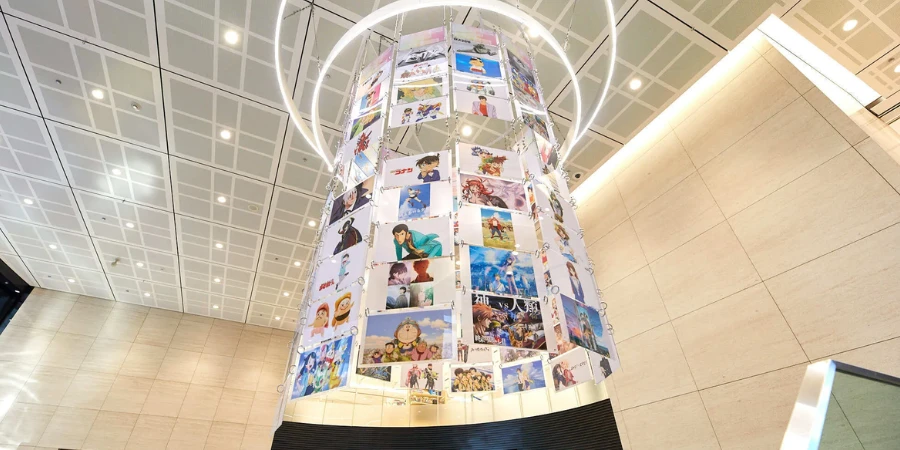

Image Credit: TimeOut
Not to be confused with Tokyo Station’s Character Street, Anime Tokyo Station is located in the Tokyu Building East in Minami-Ikebukuro, just a few minutes’ walk from Ikebukuro Station’s East Exit. It serves as a cultural facility where visitors can enjoy rotating exhibits dedicated to new and retro anime, with showcases for original storyboards, design materials, digital content, and more. Anime Tokyo Station is a must-visit for anime lovers, offering an otaku-enriching pitstop away from the typical Akihabara.
Free Things to Do in Anime Tokyo Station
Anime Tokyo Station spans three floors of the Tokyu Building East. The basement floor features an archive with over 50,000 animation materials, master tapes, and production materials, and is also dedicated to exhibiting retro anime like Astro Boy and JIN-ROH. The first floor houses an interactive screen where you can enjoy productions that can only be viewed in the museum. The second floor has a special exhibition room where production materials and life-size models from various anime, from Naruto to Gundam and more, are displayed on a rotating basis.
Additionally, Anime Tokyo Station hosts free workshops on the 2nd and 4th Saturdays of every month. These cover animating, voice acting, drawing, and other disciplines related to anime production. Refer to the event calendar for information and reservations for upcoming workshops.
Paid Activities to Do in Anime Tokyo Station
While all exhibits and workshops are free to enjoy, Anime Tokyo Station also houses a merchandise shop and gacha machines where you can purchase limited-edition souvenirs of your favourite anime.
Access
Suntory Hakushu Distillery
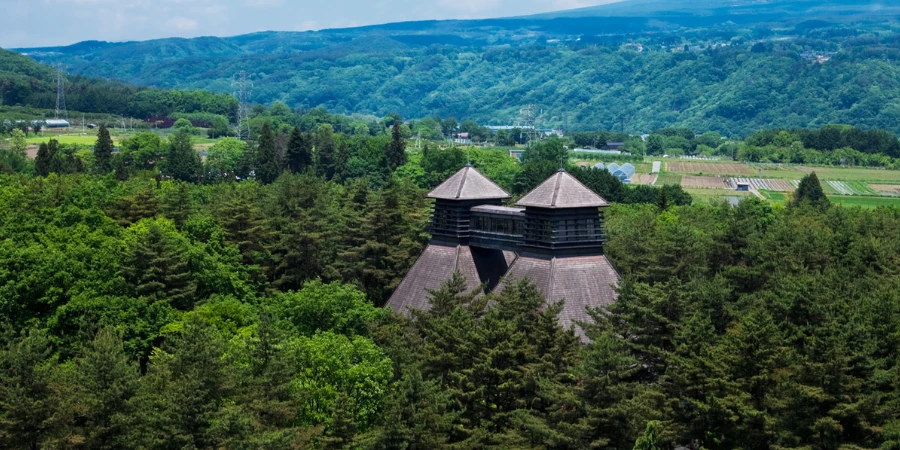

Image Credit: Japanese Whisky
In the forests of the Southern Alps in Hokuto, Yamanashi Prefecture, lies the Suntory Hakushu Distillery, one of the most renowned whisky production facilities in Japan. Suntory Hakushu sets itself apart for its unique production terrain. The natural environment surrounding the high-altitude distillery allows for the supply of mineral-rich water and has influenced their eco-conscious brewing models, which have been internationally acclaimed and emulated by others. If you happen to be in Yamanashi, this whisky distillery is a wonderful destination for learning about locally produced alcohol and for taking in the natural environment.
Free Things to Do in Suntory Hakushu Distillery
The distillery is open to the public at no cost, but a reservation is required. By opting to explore the distillery yourself, you will have access to the Suntory Museum of Whisky, bar, restaurant, souvenir shop, and bird sanctuary. The bird sanctuary is particularly popular among bird watchers and photographers, and is accompanied by a mapped forest trail that can be enjoyed year-round.
Paid Things to Do in Suntory Hakushu Distillery
Suntory Hakushu Distillery offers paid guided tours (reservations required), which allow you to watch the malt whisky production process from up close and enjoy a tasting session for component whiskies and the infamous Hakushu Single Malt Whisky. By signing up for the tour, you will also be able to access all other facilities without prior reservations, especially during busy days.
Access
Tour of Japan’s National Diet
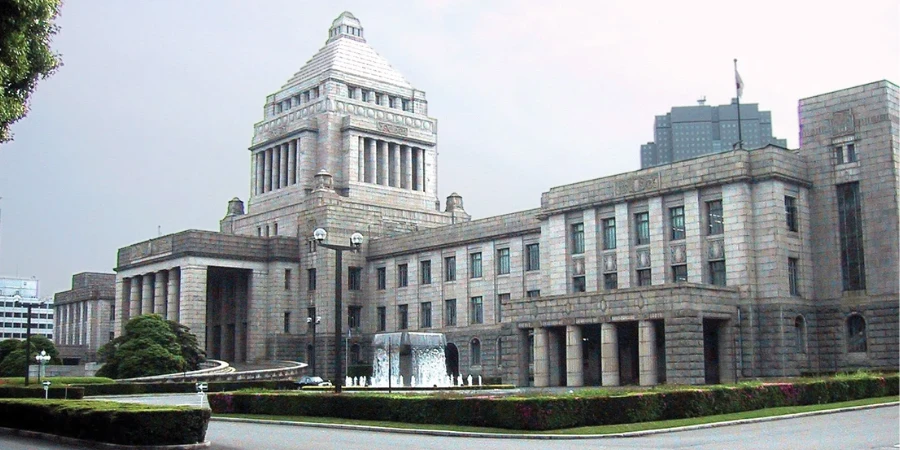

Image Credit: Britannica
If you’re looking for a unique immersive experience, consider signing up for a tour of Japan’s National Diet Building. The architecturally stunning building, equipped with a stone-white facade reminiscent of the White House, is the heart of Japan’s bicameral legislature, which consists of the House of Representatives and the House of Councillors. The building is divided into the House of Representatives (Lower House) and House of Councillors (Upper House), both of which offer free guided tours in English.
Free Things to Do in Japan’s National Diet Building
The House of Representatives (Lower House) offers free tours in English for foreign visitors by appointment on Mondays at 2 PM and Tuesday to Friday at 3 PM. The tour will take you around the Main Chamber, Emperor’s Rest Room, Noblemen’s Room, Central Hall, and garden. Reservations must be made via email at least two months prior. Detailed information and requirements can be found on the website.
Meanwhile, the House of Councillors (Upper House) conducts Japanese-only tours but welcomes all guests, including foreign visitors. The 60-minute tour is available to walk-in guests from 9 AM to 4 PM on weekdays, and will take you around the public gallery, Emperor’s Room, Central Hall, and garden. Do note that photography is only allowed in certain areas. Tours may be unavailable on some national holidays and events.
Paid Activities in Japan’s National Diet Building
There are no paid tours, exhibits, or attractions in the National Diet Building as it is an official government structure.
Access
Cup Noodle Museum in Osaka–Ikeda
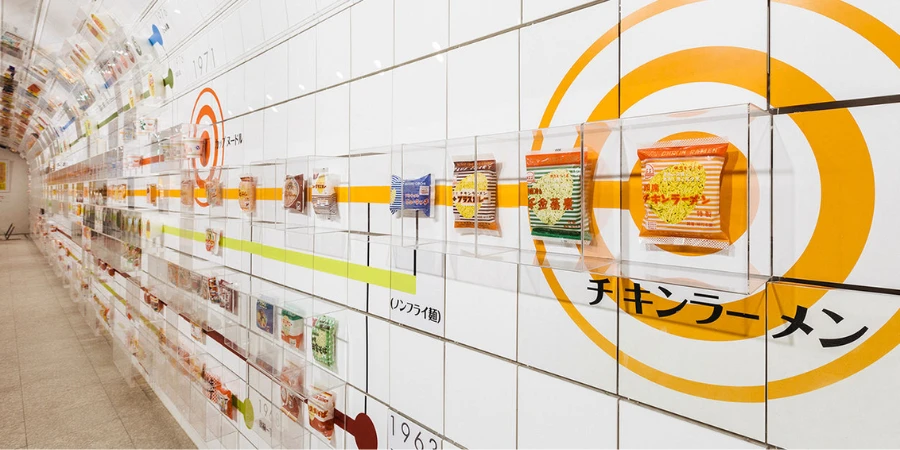

Image Credit: Nippon
In the late 1950s, Momofuku Ando invented the first form of modern instant noodles, which paved the way for the invention of the portable Cup Noodles in the early 70s. It quickly became a global sensation and continues to remain a staple everywhere in the world today, from college dorm rooms to evacuation centers and household pantries.
The Cup Noodle Museum in Osaka pays homage to the rich history of instant ramen, housing a plethora of noodley exhibits from an Instant Noodle Tunnel featuring more than 800 product packages to a recreation of Ando’s backyard, where he first invented instant ramen. This family-friendly museum is a must-visit spot for a fun immersion into Japanese culture.
Free Things to Do in The Cup Noodle Museum in Osaka–Ikeda
Entry into the Cup Noodle Museum is free of charge for visitors of all ages, with no reservations required. Inside, you can enjoy a variety of free exhibits, such as the Instant Noodle Tunnel, Momofuku Ando’s recreated shed, and the CUPNOODLES Drama Theater, where an animated film about instant noodle innovations plays in a cup noodle-shaped theater. The museum also houses various interactive displays and offers English audio guides that can be accessed without a fee.
Paid Activities in The Cup Noodle Museum in Osaka–Ikeda
One of the most popular activities in the Cup Noodle Museum is the My CUPNOODLES Factory, where you can customise your own cup noodles and take them home as a souvenir for 500 yen. The newer Chicken Ramen Factory offers a more immersive experience where you can make ramen from scratch. Due to popularity, reservations up to three months in advance are required for Chicken Ramen Factory, and each session costs 600 to 1,000 yen, varying per age group.
Access
Nogeyama Zoo
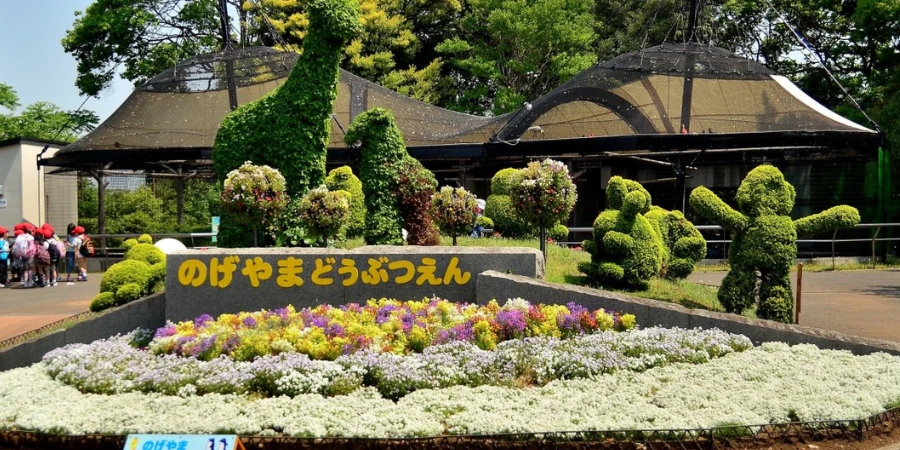

Image Credit: Japan Travel
Nogeyama Zoo is located at the heart of Yokohama and offers free admission to all guests regardless of age. Home to over 1,000 animals across over 80 species, you can enjoy and interact with lions, giraffes, black bears, and other popular zoo favourites, and even pet small animals like guinea pigs and chickens. The zoo is also home to a variety of rare animals, such as the Kagu, Red Panda, and more. Nogeyama Zoo has also been involved in the conservation of endangered species, having successfully bred the Ploughshare Tortoise and Andean Condor, which you can observe from afar.
Free Things to Do in Nogeyama Zoo
Nogeyama Zoo is a family-friendly destination where you can freely roam around green spaces, observe animals, and interact with some of them at designated feeding times. Its pleasant landscape includes a beautiful bird pond and peony garden, and is also home to over 250 cherry blossoms that can be enjoyed in the spring. In Nakayoshi Square, you can pet small animals like rabbits (depending on the season) and guinea pigs. The zoo also exhibits various educational sessions where visitors can learn about endangered species and conservation efforts. It runs seasonal events throughout the year, including the Night Nogeyama parade in summer and Christmas events in winter.
Paid Activities in Nogeyama Zoo
Being a completely free facility, there are no paid activities in Nogeyama Zoo. However, parking, wheelchair, and stroller rentals will incur a small fee. The zoo also has various dining options and a souvenir shop, which it relies on for revenue.
Access
Website – recommended to check for petting zoo reservations during busy reasons
Google Maps
Hibiya Open-Air Concert Hall (Yaon)
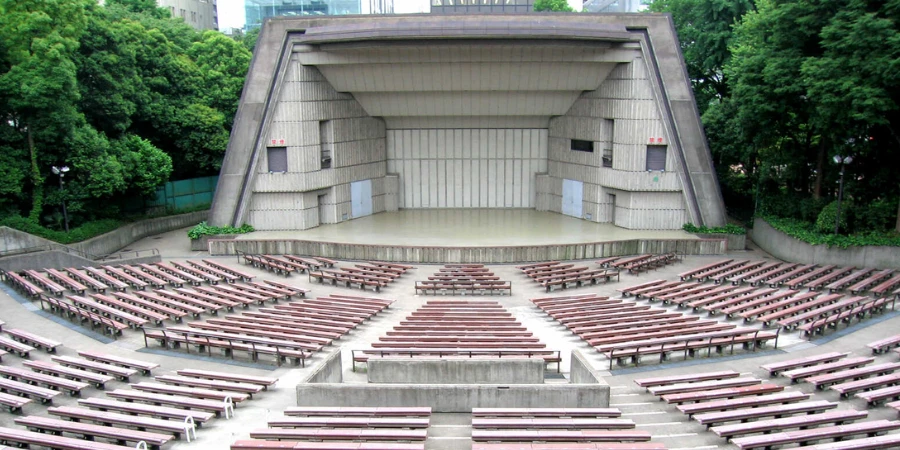

Image Credit: Visit Chiyoda
The Hibiya Open-Air Concert Hall, also known as Yaon, is a large-scale outdoor music venue located in Hibiya Park and is fully managed by the Tokyo Metropolitan Government. It has historical significance in music culture for being the birthplace of Japanese Rock, and has since hosted a plethora of artists and music events. Since Yaon belongs to a government district, it’s only open for concerts from October to April and is limited to playing on weekends and national holidays. If you’re interested in attending a free concert in Japan during your trip, this stop may be worth visiting, but do note that you may have to sign up for a free lottery to secure tickets.
Free Things to Do in Hibiya Open-Air Concert Hall (Yaon)
Yaon hosts a variety of concerts from October to April during weekends and public holidays. These are often paid events, but being an outdoor venue, it’s possible to enjoy the vibes from afar. Every year, the Hibiya Music Festival is held across two days and is open to all visitors with a ticket, which you can get via an advanced reservation or free lottery on the website. Public events and special Open Days are also occasionally held in the venue and may allow free access depending on the occasion.
Paid Activities in Hibiya Open-Air Concert Hall (Yaon)
Concerts and various events are held in Yaon. If you’re interested in an artist, you can purchase tickets in advance to watch them live.
Access
JAXA Tsukuba Space Center
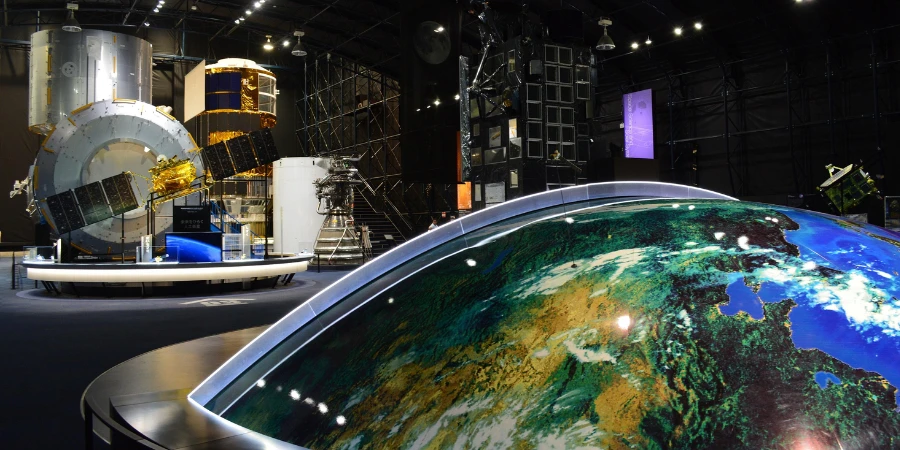

Image Credit: JAXA
For space fans, the Japan Aerospace Exploration Agency (JAXA) Tsubasa Center in Ibaraki Prefecture is a must-visit destination. It serves as the HQ for JAXA and is involved in astronaut training, satellite development, and is where the ISS Japanese Experiment Module, Kibo, is operated. The massive Space Center is home to a plethora of exhibits, development facilities, and even life-size models of experiment modules and launch vehicles.
Free Things to Do in JAXA Tsukuba Space Center
JAXA Tsukuba Space Center is free for all visitors, but some facilities are off-limits as they are used by workers. Visitors can enter the Space Dome exhibition hall, Rocket Square outdoor area, and Planet Cube (museum shop and event space), which feature various exhibits, interactive displays, models of space crafts and rockets, and even a full-scale H-II rocket that you can view and take pictures with. The JAXA Library is also publicly accessible, but you must get permission to access it beforehand.
Paid Activities in JAXA Tsukuba Space Center
A guided tour of the JAXA Tsukuba Space Center is free for students and 500 yen for adults, and allows you guided access across restricted zones, such as control rooms, astronaut training facilities, and even a simulated rocket launch sound experience. These tours are also offered in English, but phone reservations are required in advance.
Access
Totoro’s Forest (Sayama Hills) & Kurosuke’s House


Image Credit: Journographie
The highly acclaimed Studio Ghibli film, My Neighbor Totoro, features stunning forestscapes that were largely inspired by the forests of Sayama Hills. Its popularity prompted the formation of the Totoro no Furusato Foundation, which is dedicated to preserving these wonderful forest spaces, which have been fondly named Totoro Forests. There are 60 plots of land to explore and a preserved farmhouse called Kurosuke’s House, which serves as a National Tangible Property. For nature lovers and fans of Studio Ghibli, the trek along the forested paths offers a tranquil and scenic experience that will feel like stepping into Totoro’s world.
Free Things to Do in Totoro’s Forest
Totoro’s Forest consists of 60 plots of forest land, all of which can be visited for free. These preserved areas are largely unpaved and are riddled with creeks, farmland, tea fields, cedar, and cypress. There are over 1,000 species of ferns and a ton of wildlife and birds, which make them popular spots for bird watchers. All the forests are housed in Sayama Hills, which borders Tokyo and Saitama. Due to the size of the area, it’s not possible to explore all 60 Totoro Forests in a single day, but the website offers helpful recommendations on adjacent forest clusters that lead to one another, easing exploration. We highly recommend planning your forest route beforehand.
Paid Activities in Totoro’s Forest
As Totoro’s Forests are funded through donations, guided tours, paid ads, and any commercial activity is prohibited in any of the Totoro zones. Any paid tours held in these areas are unofficial and not legal.
The forests lead into a preserved farmhouse called Kurosuke’s House, which charges an entrance fee of 500 yen and requires an advance reservation. Inside, you can admire the stunning traditional Japanese interior and take photos with a life-size Totoro statue.
Access
Open-Air & Wild Onsen
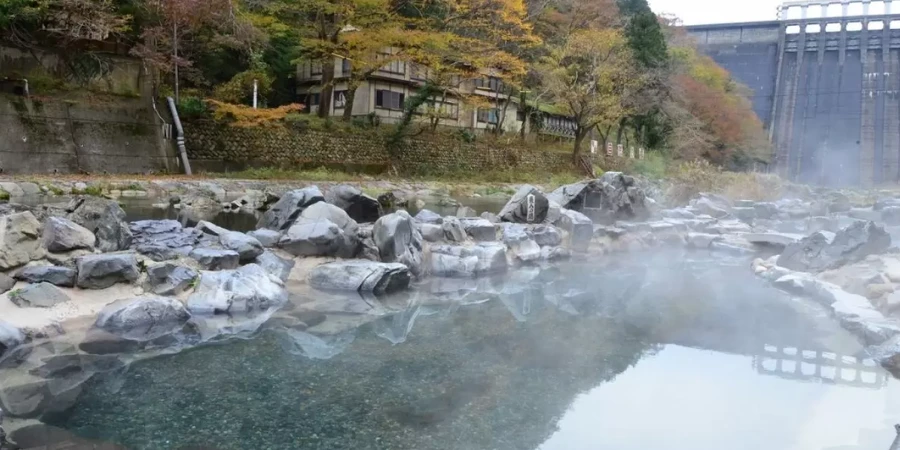

Image Credit: Okayama Prefecture Official Tourism Guide
For adventurous souls and fans of traditional Japanese onsen, searching for hot springs out in the wild can be a wonderful and fulfilling activity. These are typically located in remote and rustic places, and may require hiking, driving, and passing through unpaved paths filled with wildlife to access. Refer to this website full of wonderful recommendations on open-air onsen, as well as details on access requirements.
For alternative free onsen and bathhouses that less-seasoned travellers can easily get to, here are some options you can consider:
Yubara Sunayu
Mixed bath by the riverside; swimwear is acceptable; located close to the Yubaru Onsen Bus Stop in Okayama.
Location: Maniwa, Okayama
Nozawa Onsen
A ski resort with 13 free public bath houses.
Refer to the website for the locations of all 13 bath houses
Toyosu Fish Market
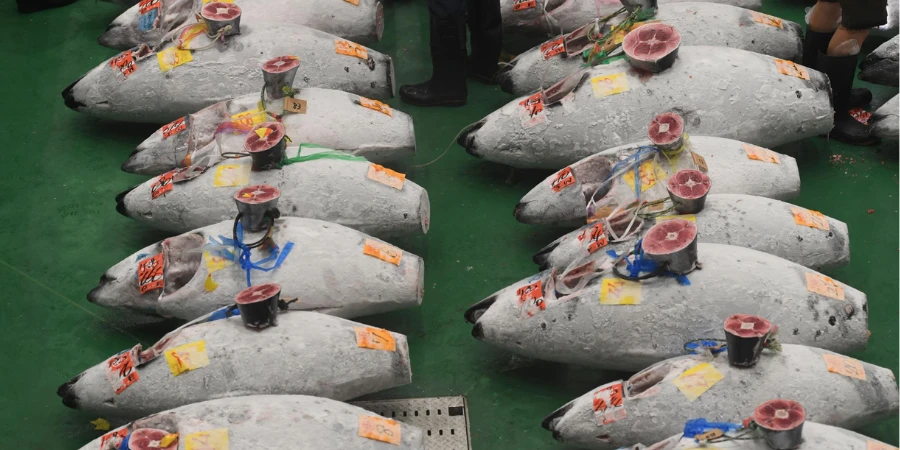

Image Credit: CNN
While the Tsukiji Fish Market is one of the most-recommended itinerary staples for first-time Tokyo travellers, consider heading to the less-known but still widely-popular Toyosu Fish Market, which is a newer complex filled with fish wholesalers and restaurants. Its biggest event is the early morning tuna auction, where visitors can witness culinary experts examine freshly-caught tuna that will be used by high-end restaurants for the day’s meal services.
Free Things to Do in Toyosu Fish Market
The early morning tuna auctions in Toyosu Fish Market are completely free for the public to view through the observation gallery. You’ll be able to view the auction from afar through a dedicated glass-viewing corridor. The auctions run from 5:30-6:30 AM, so it’s best to arrive early.
There is also a dedicated viewing deck where you can enjoy the auction at closer proximity, but requires a reservation made through an online lottery, which means that tickets are not guaranteed. If you’re travelling solo and are passionate about tuna, it may be worth giving the free lottery a try via the official website.
Paid Activities in Toyosu Fish Market
Toyosu Fish Market is home to a plethora of fish wholesalers and restaurants. With endless dining options, you can enjoy some of the freshest fish cuisine in Tokyo. Paid tours and culinary workshops are also offered by independent companies.
Access
Arashio‑beya Sumo Training Viewing
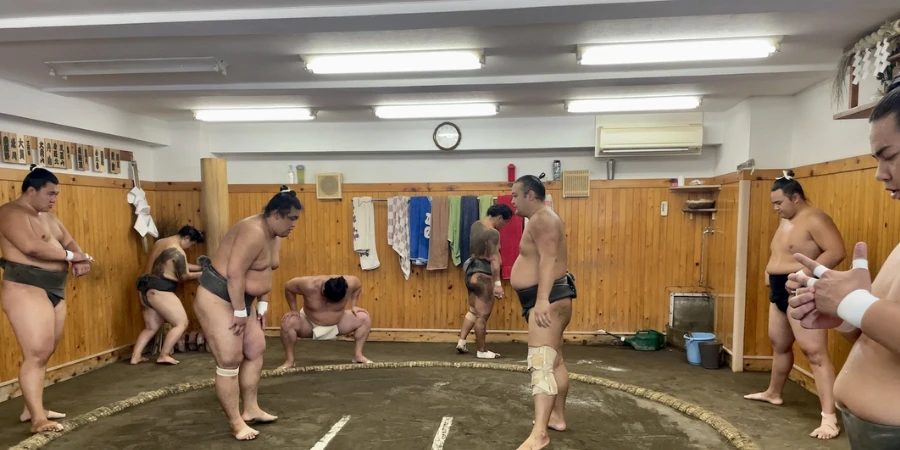

Image Credit: Tokyo Great Cycling Tour
Arashio‑beya is a sumo stable located in Tokyo and is home to acclaimed rikishi, including Wakatakakage Atsushi, Wakamotoharu Minato, and more. Unlike most stables, which prefer to maintain some privacy, Arashio-beya allows spectators to view the morning practice on weekdays.
Free Things to Do in Arashio‑beya
Spectators can visit Arashio-beya and watch the early morning sumo practice, which runs from 7:30 AM to 10:00 AM on weekdays. The event is completely free to watch with no reservations required, and can be viewed from the street through the large stable windows. After practice, some rikishi will exit the stables to take photos and sign autographs for fans, but this is not guaranteed. Sumo practice is sometimes cancelled, especially during competition season. Make sure to check the website for training timetables beforehand.
Paid Activities in Arashio-beya
Guided tours that take you inside the Arashio-beya stables are offered by tour companies. Depending on the season, there are also paid opportunities to participate in Q&A sessions and experience sumo-style meals.
Access
Tokyo International Forum
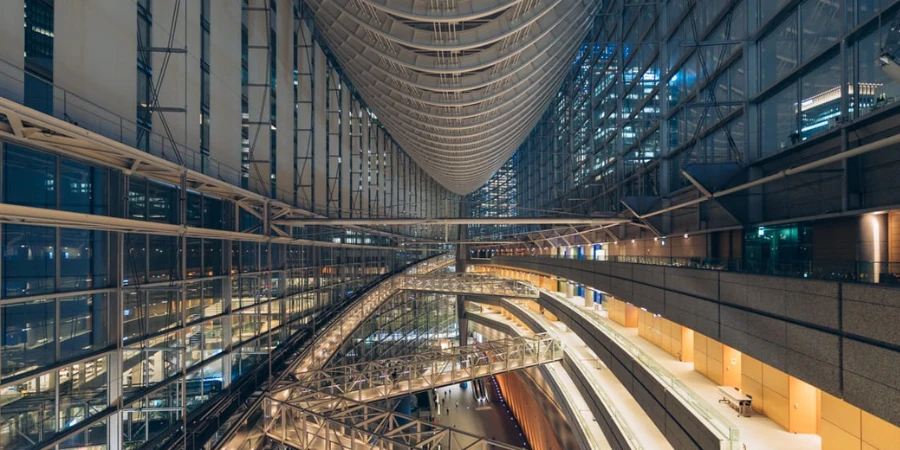

Image Credit: Tokyo Night
The Tokyo International Forum is an exhibition centre in Marunouchi that is known for its incredible glass and steel architecture, which consistently exhibits itself through a glasslike facade and interior made primarily of arched steel beams and cleanly engineered lines. The interesting shape of the building gives the illusion of a ship’s hull, adding to the photogenic charm of the structure. Apart from being widely visited for photo opportunities, the Tokyo International Forum is also home to a plethora of free things to do.
Free Things to Do in the Tokyo International Forum
There is no fee to enter the Tokyo International Forum, which houses a multitude of sculptures and installations that can be viewed throughout the building. It also regularly runs free exhibits and public displays that rotate on a regular basis. Every month, the Oedo Antique Market is held at the plaza grounds, which fosters a lively environment for fans of vintage shopping. Refer to the event schedule for exhibits to enjoy during your visit.
Paid Activities in the Tokyo International Forum
The Tokyo International Forum is a venue for concerts and theater shows, including jazz concerts, ballet performances, musicals, and more, which you can purchase tickets to enjoy. Various exhibits, trade shows, workshops, and conventions are also run in the building, some of which require an entrance fee. It’s also possible to book guided tours around the venue, but these are offered by private companies.
Access

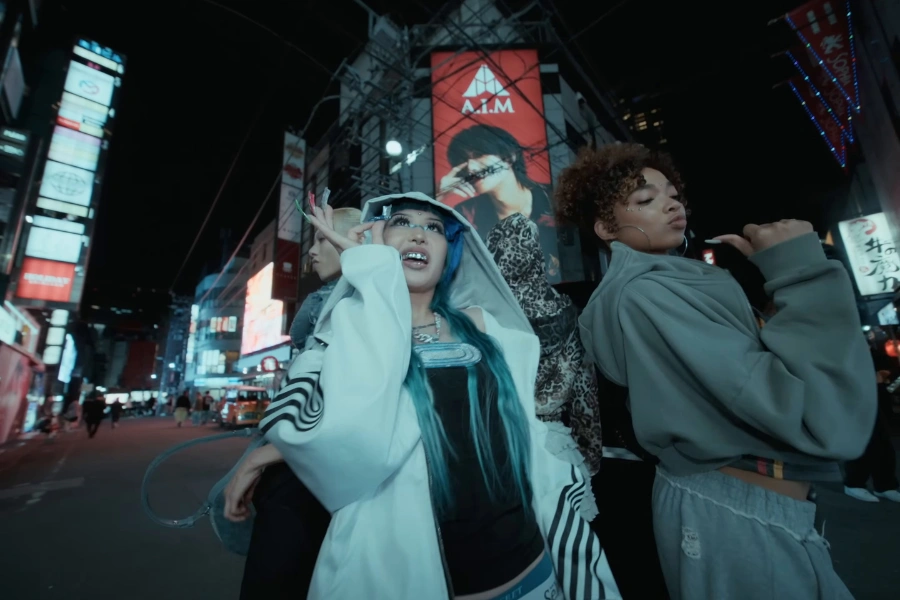
AloJapan.com